You See a Motorboat Approaching on Your Right: Essential Actions to Take
When out on the water, understanding proper boating etiquette and navigation is crucial to ensure a safe and enjoyable experience. One common situation that recreational boaters may find themselves in is encountering a motorboat that is approaching from their right side. In such scenarios, it is essential to know what actions should be taken to prevent potential accidents and abide by established navigation rules.
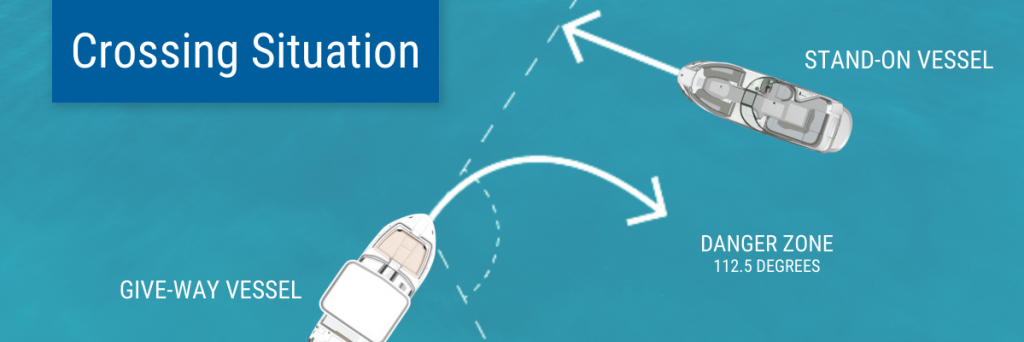
The concept of right of way is a fundamental aspect of boating navigation and helps guide boaters on which vessel has priority when encountering other boats on the water. This is determined by the type of vessels involved and their relative positions or angles. Adhering to these rules and operating your vessel safely and responsibly will not only prevent accidents but also promote harmonious coexistence among boaters.
Key Takeaways
- Knowing how to react to approaching motorboats is essential for boating safety.
- The right of way concept helps boaters determine which vessel has priority in various situations.
- Adhering to navigation rules and operating responsibly prevents accidents and promotes positive boating experiences.
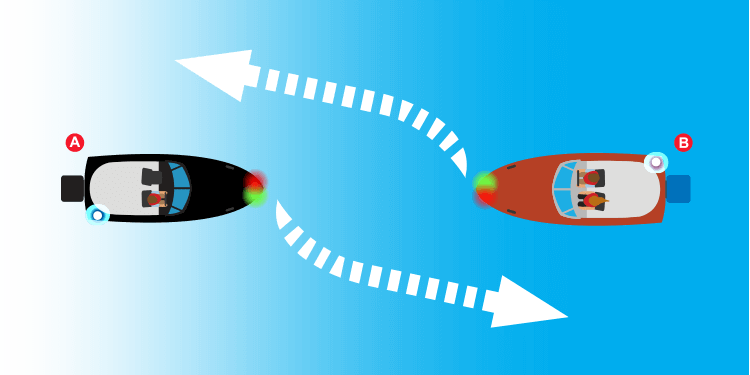
Understanding the Basics of Navigation
When navigating through waterways, understanding the right-of-way rules and vessel types is crucial for avoiding collisions and ensuring safe travels. Boating rules, also known as the "rules of the road," are set to maintain order on the water and prevent accidents from occurring.
Vessel Types and Terminologies
There are various types of watercraft, and it is essential to be familiar with the basic terms and functionalities of each type.
- Vessels: A general term for all types of marine transportation, including motorboats, sailboats, and powerboats.
- Motorboat: A type of boat that is propelled by an engine rather than sails. These vessels can range from small fishing boats to large yachts.
- Sailboat: A watercraft that relies on wind power to move and maneuver in the water. They come in various sizes and designs, from small dinghies to large sailing yachts.
- Powerboat: A high-speed motorboat usually used for leisure activities such as water skiing or racing.

When navigating the water, it is essential to understand who has the right of way to avoid collisions. Right-of-way rules determine which vessel should yield to another based on their design and actions:
- Right of way: Refers to the right of a vessel to continue its course when encountering another watercraft. The vessel that has the right of way has the responsibility to maintain its path and speed, while the other vessel must yield and adjust its course and speed.
- Port: The left side of a vessel when facing forward. The term comes from the early days of sailing, as the left side of the ship would be docked at port.
- Starboard: The right side of a vessel when facing forward. The term originates from the Old English word "steorbord," referring to the side of the ship where the steering oar was located.
As a general rule, a power-driven vessel, such as motorboats, must give way to a sailboat under sail, unless the sailboat is overtaking the powerboat. In a situation where you see a motorboat approaching on your right, you must assess the situation based on the prevailing conditions and follow the right-of-way rules. However, it is always a good practice to communicate with the other vessel and exercise caution to avoid accidents on the water.
Learning the basics of navigation, such as understanding right-of-way rules, vessel types, and terminologies, helps ensure a more confident and safe boating experience.
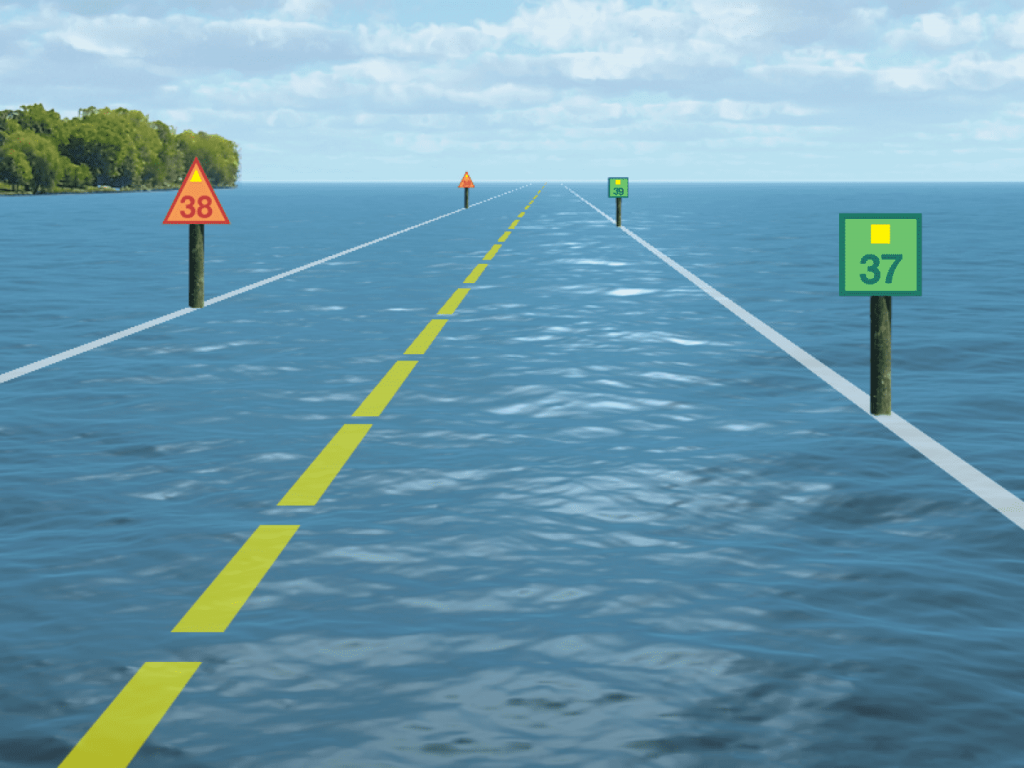
The Concept of Right of Way
Right of Way Rules
In boating, the concept of right of way is crucial to ensure safe navigation and avoid collisions. The right of way rules provide guidelines for both the stand-on vessel and the give-way vessel. The stand-on vessel is the one with the right of way, and it should maintain its course and speed. The give-way vessel, on the other hand, must yield to the stand-on vessel and take appropriate action to avoid a collision.
In a meeting head-on situation, both vessels must alter their course to starboard (right) to pass on the port (left) side of the other. The overtaking rule states that the vessel being overtaken is the stand-on vessel, while the overtaking vessel is the give-way vessel. Both vessels must take responsibility to avoid a collision, with the overtaking vessel maintaining a safe distance from the other.
In a crossing situation, if you see a motorboat approaching on your right, you must maintain your current course and speed. The vessel on the starboard side has the right of way, and you should ensure that your actions do not confuse the other boater or increase the risk of a collision.

Exceptions to the Right of Way Rules
While the right of way rules are generally applicable in most navigation situations, there are some exceptions. These exceptions depend on factors like vessel size, propulsion method, and the waterway's nature.
- A vessel not under command (not able to maneuver) has the right of way over other vessels.
- Vessels restricted in their ability to maneuver (e.g., due to their work or size) have the right of way over others.
- A vessel engaged in fishing has the right of way over other vessels, except those mentioned above.
- A sailing vessel has the right of way over vessels using motor power unless the motor-powered vessel is restricted in their ability to maneuver or not under command.
In conclusion, understanding the concept of right of way and the exceptions to the rules is vital for all boaters. Maintaining a vigilant lookout, following the proper rules, and adhering to the right of way guidelines will ensure a safe boating experience for all participants.

Navigation Rules
Inland and International Rules
Navigation rules, also known as the "rules of the road," provide guidelines for safe navigation in both inland and international waters. In the United States, inland rules apply to inland waterways, such as lakes and rivers, while international rules apply in coastal waters and on the high seas. On the western rivers, a combination of both inland and international rules may be applicable. When encountering a motorboat approaching on your right, it is essential to know the correct actions to take according to these rules.

Understanding Different Navigation Signals
In both inland and international rules, there are specific navigation signals to help boaters understand the right-of-way and avoid collisions. These signals include visual aids such as colored lights, sound signals, and hand signals.
When a motorboat approaches on your right or from the starboard side, it's crucial to remember that the boat on the right has the right-of-way. As the stand-on vessel, the boat on the right should maintain its course and speed, whereas the give-way vessel, or the boat on the left, should take evasive action by slowing down, altering course, or even stopping if necessary source.
At night, navigation lights play a significant role in determining the right-of-way. The red light indicates the port side of a boat, and a green light represents the starboard side. If you see a green light crossing from left-to-right, that means you are the stand-on vessel and should maintain your course and speed. However, if you see a red light crossing right-to-left in front of you, you must change your course as the give-way vessel source.
Both inland and international rules also use sound signals to communicate intentions and actions between vessels. Short and prolonged blasts of a horn or whistle can indicate the planned maneuver of a vessel, such as turning, stopping, or overtaking another boat. In combination with visual navigation signals like lights and hand gestures, these sound signals help maintain safety on the water.
By following these navigation rules in both inland and international waters, boaters can more effectively understand their responsibilities and navigate the waterways with confidence and safety.
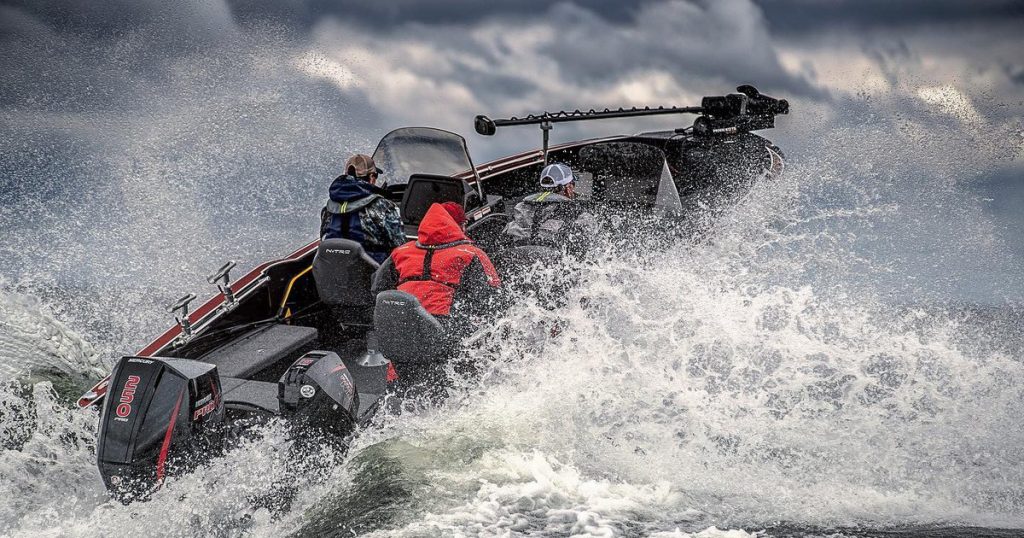
Safe and Proper Operation of Vessels
Speed and Maneuvering
Ensuring safety on the water requires boat operators to maintain a safe speed and appropriate maneuverability at all times. When a motorboat approaches on your right, the first action to take is to maintain your current course and speed. Abruptly changing your course or speed can confuse the other boat's operator and lead to a potential collision. It is essential for the stand-on craft to maintain its speed and direction, while the give-way craft adjusts accordingly to ensure a safe distance between both vessels.
Keeping a Proper Lookout
Aside from maintaining safe speed and maneuverability, boat operators must also keep a proper lookout at all times. This includes scanning the surroundings for potential hazards, other vessels, and navigational markers. Being aware of your surroundings can help prevent accidents and ensure the safety of everyone on board.
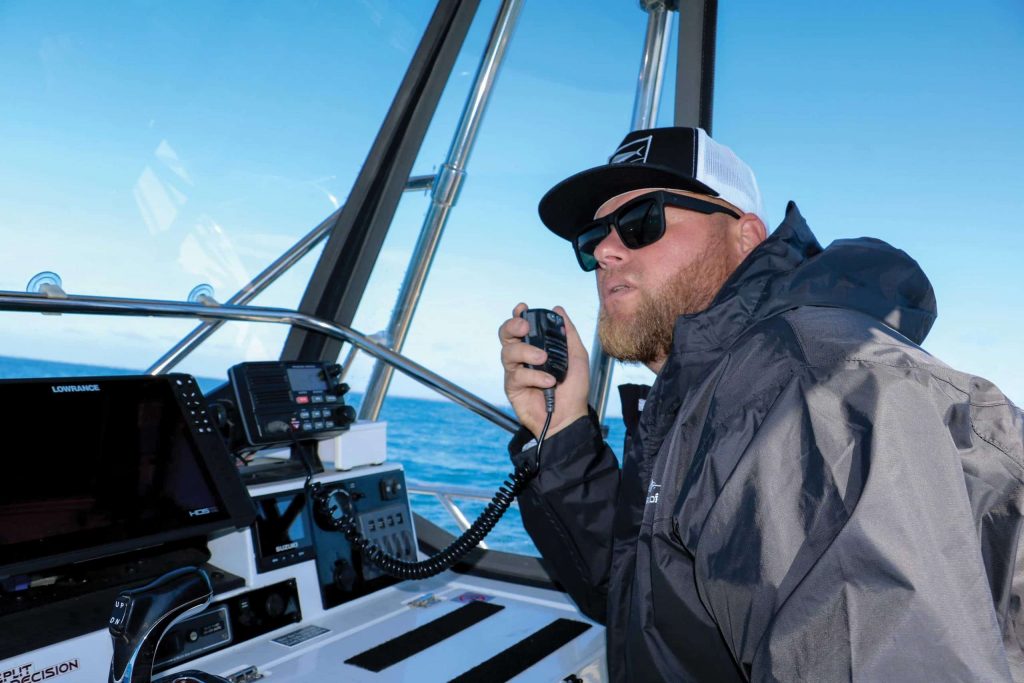
Communication with Other Vessels
Communication is a vital aspect of safe boat operation, especially when navigating congested waterways or encountering other vessels. Boat operators should use proper signals and sound devices to indicate their intentions during maneuvering situations. For example, when approaching a narrow channel, it is crucial to stay on the starboard side and use a prolonged blast to announce your approach to vessels that may be around the bend. Effective communication can help avoid misunderstandings and decrease the risk of collisions.
In summary, safe and proper operation of vessels requires boat operators to maintain a safe speed, ensure maneuverability, keep a proper lookout, and communicate effectively with other vessels. By adhering to these guidelines and staying conscious of the surrounding environment, boaters can enjoy a safe and enjoyable experience on the water.
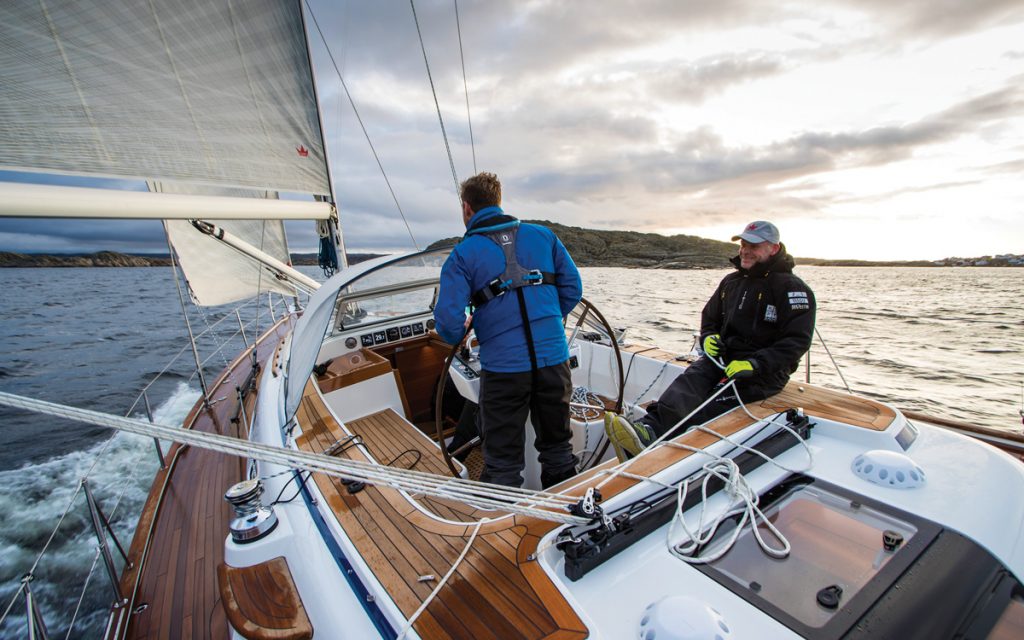
Identifying Specific Vessel Situations
Actions When a Motorboat Approaches
When encountering a situation where a motorboat is approaching from your right, it is crucial to apply appropriate collision avoidance rules to prevent any accidents. First, maintain your current course and speed, as abrupt changes can confuse the other boat's operator, potentially leading to a collision1. Next, assess the crossing situation by determining the direction of the approaching motorboat. If it is approaching from your right side, it has the right of way, meaning you should yield and take appropriate action to avoid a collision2.
To effectively prevent collisions while ensuring the safety of both vessels, follow these guidelines:
- Be aware of potential hazards: Identify any obstructions, shallow areas, or other vessels nearby that may complicate evasive maneuvers.
- Take early and substantial action: Once it's clear that the approaching motorboat has the right of way, act decisively and early to avoid a collision3.
- Clearly indicate your evasive action: Make sure the other boat's operator can see your intended course change to avoid confusion.
- Monitor the situation closely: Continuously observe the approaching motorboat's movement and ensure that your evasive action successfully prevents a collision.
By following these steps and using a confident, knowledgeable, neutral, and clear tone, it will be easier for both parties to navigate the situation effectively. Remember, understanding the basics of collision avoidance rules and taking appropriate evasive action are essential for maintaining safety on the water.
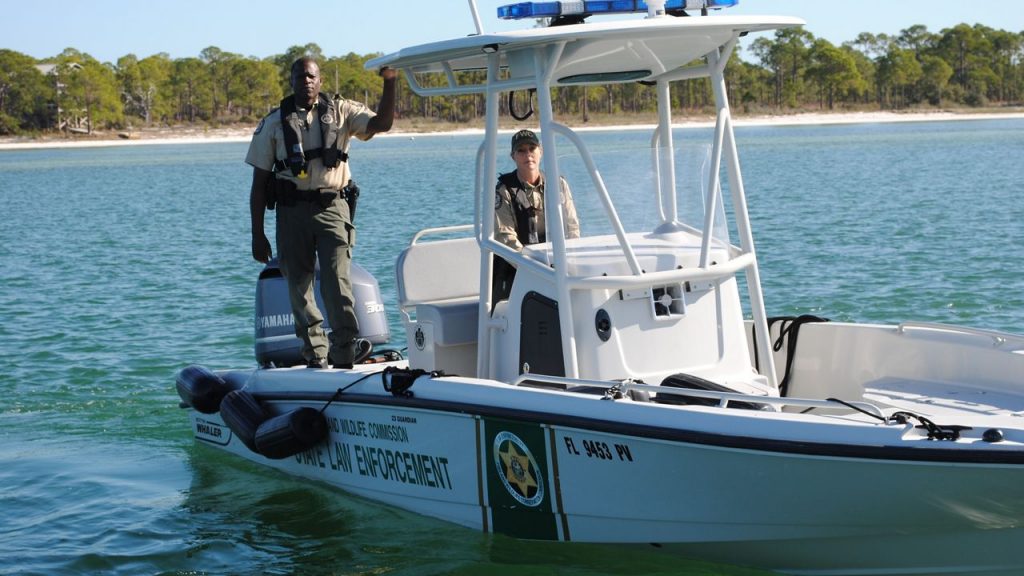
Laws, Regulations, and Exceptions
State Laws and Regulations
Each state may have its own specific laws and regulations regarding boating on their waters. These laws can differ from federal regulations and international rules. It is important to familiarize yourself with the applicable state laws and regulations to ensure safety and compliance when navigating on state waters.
In general, navigational rules are designed to minimize the risk of collision between boats. These rules apply to all vessels, regardless of size or type, and specify the actions to take when encountering other vessels. A key component of these rules is the concept of right-of-way, which determines which vessel should alter its course or speed to avoid a potential collision.
One common principle is that the vessel on the right, often referred to as the "stand-on" vessel, has the right-of-way, while the vessel on its left, called the "give-way" vessel, must yield to the stand-on vessel. However, other factors, such as the type and activity of the vessels involved, can also affect the right-of-way determination.
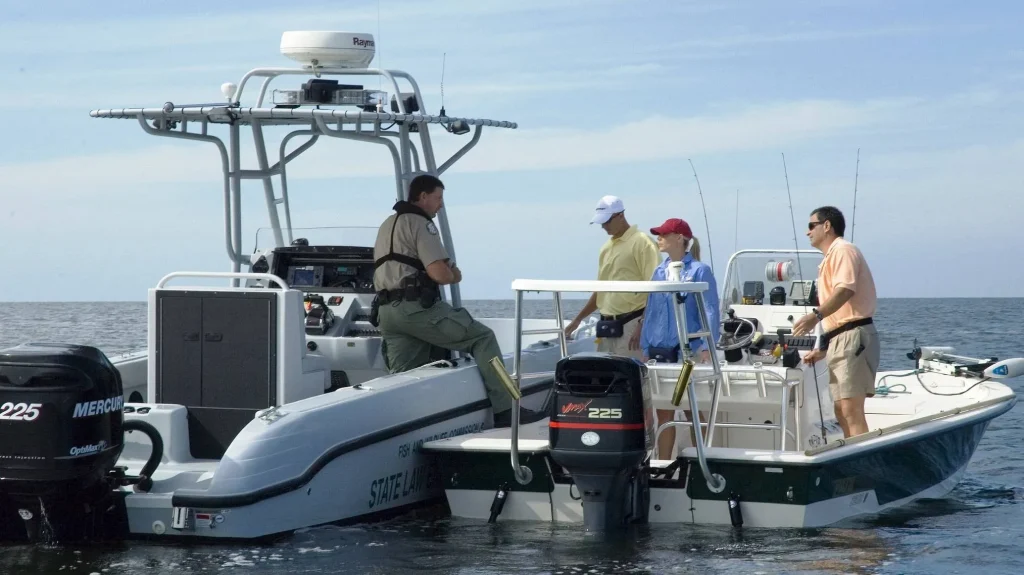
Common Exceptions to General Rules
There are a few notable exceptions to the general right-of-way rules that every boater should be aware of:
- Vessels not under command: A vessel that is not under the control of its crew, for example, due to equipment failures or emergencies, has the right-of-way over other vessels in all situations.
- Vessels constrained by draft: Large, deep-draft vessels, such as cargo ships or tankers, may have limited maneuverability due to their size and the depth of the water. These vessels have the right-of-way over smaller, more maneuverable boats.
- Vessels restricted in their ability to maneuver: Some vessels, like tugboats towing barges or boats engaged in commercial fishing, have restricted ability to maneuver. These vessels also have the right-of-way over others that are more agile.
- Restricted visibility: In situations where visibility is reduced, such as fog or heavy rain, special rules apply. All vessels should proceed at a safe speed and take steps to make their presence known to other boats in the vicinity, such as using horns or lights as required.
By understanding and adhering to these laws, regulations, and exceptions, boaters can contribute to safer navigation and reduce the risk of collisions on the water.
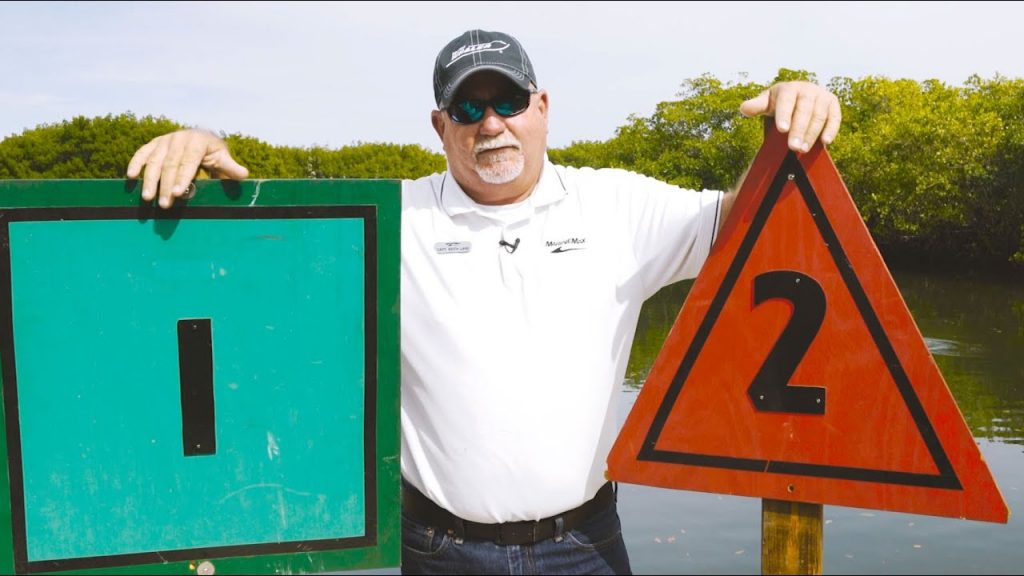
Special Cases in Boating Navigation
Dealing with Fishing and Towing
When navigating in areas where other vessels are engaged in fishing or towing activities, it is essential for boaters to be aware of their surroundings and take proper actions to avoid accidents. Fishing vessels, for instance, may be limited in their ability to maneuver due to their gear. Boaters should give ample space to these vessels, slowing down or altering their course as necessary.
In case of towing situations, it's important to understand that the towing vessel might require a greater distance to maneuver, especially when making turns. Additionally, the towed object, such as a waterskier, wakeboarder, or tube, can affect the towing boat's movement as well. It's essential for other boaters to give the towing vessel enough room and maintain a safe distance, reducing the likelihood of incidents or collisions.
Personal watercraft (PWC) users should also be vigilant while navigating near fishing and towing activities. Due to their smaller size and agility, PWCs can inadvertently come dangerously close to other vessels. In situations where PWCs encounter fishing boats or towing vessels, it's important for the PWC operators to slow down, maintain a safe distance, and avoid creating wakes or disturbances that might hinder these activities.
In conclusion, boaters should be mindful of various types of vessels engaged in fishing, towing, and other water activities. By being aware, maintaining safe distances, and taking the right actions, they can contribute to a safer and more enjoyable boating experience for all.

Frequently Asked Questions
What is the proper way to respond to an approaching motorboat?
When encountering an approaching motorboat, the best course of action is to maintain your current course and speed. Abruptly changing direction or speed can confuse the other boat's operator, possibly leading to a collision. It is essential to follow the navigation rules to ensure safe boating practices.
What are the safety precautions when encountering a motorboat?
To ensure safety when encountering a motorboat, follow these key points:
- Remain vigilant and maintain a lookout for other vessels.
- Adhere to proper navigation rules and right of way guidelines.
- Use your boat's lights and signals effectively to communicate your intentions to other boaters.
- Slow down in areas with heavy traffic or low visibility.
How should you yield to a motorboat approaching from the right?
If a motorboat is approaching from the right (starboard), slow down and give way, as the vessel on the right has the right of way. This rule applies to power vessels; sailboats not using auxiliary power generally have right of way over motorboats, with some exceptions (source).
What actions should be taken to avoid collision with an approaching motorboat?
To avoid collisions, both vessels should adhere to proper navigation rules and maintain proper lookout. If a head-on situation arises, both vessels should turn to starboard (right) in order to pass each other port-side to port-side, as stated in the rules of navigation.
How can you determine which vessel has the right of way?
In general, the vessel on the right (approaching from starboard) has the right of way. However, sailboats not using auxiliary power usually have right of way over motorboats, unless overtaking or in specific situations (source). Familiarize yourself with navigation rules to ensure correct understanding of right of way in different scenarios.
What are the navigation rules when encountering a motorboat on the water?
The navigation rules for encountering a motorboat on the water include:
- Giving way to vessels on your right (starboard).
- Turning to starboard in a head-on situation to pass port-side to port-side.
- Sailboats not using auxiliary power having right of way over motorboats in most cases.
- Properly using signals and lights to communicate intentions to other boaters.
By following these rules, boaters can safely navigate and avoid potential collisions with other vessels.
Footnotes
- BoatUS Foundation - Rules of the Road ↩
- You See a Motorboat Approaching on Your Right - What Action Should You Take ↩
- Discover Boating - Boating Right of Way ↩
Charlie is Editor-in-Chief of Sea Magazine